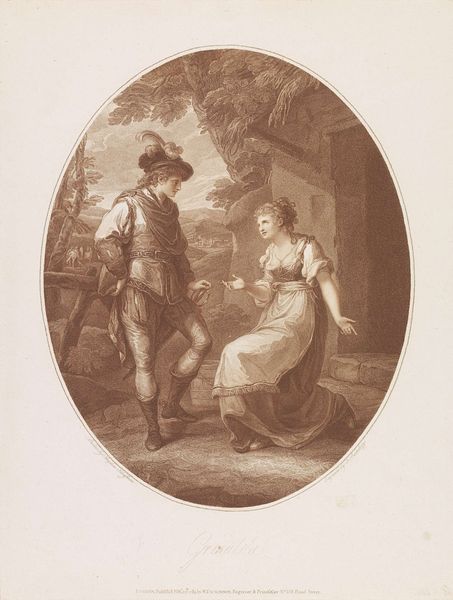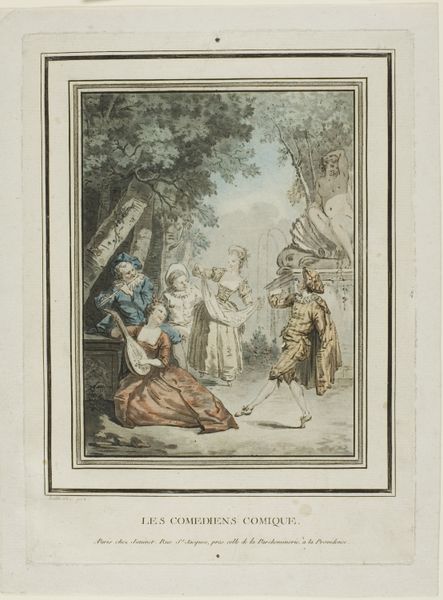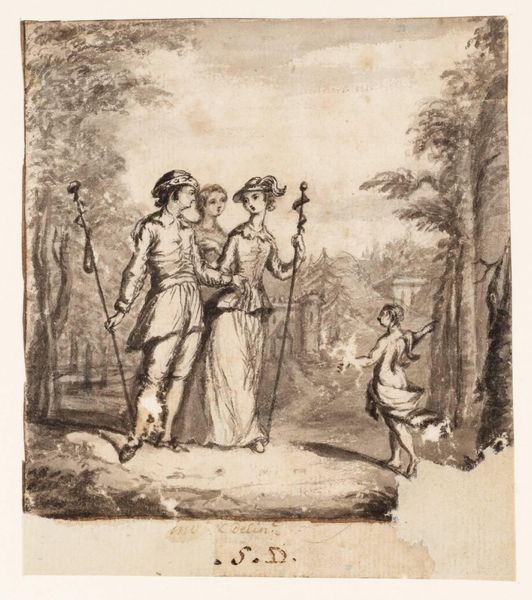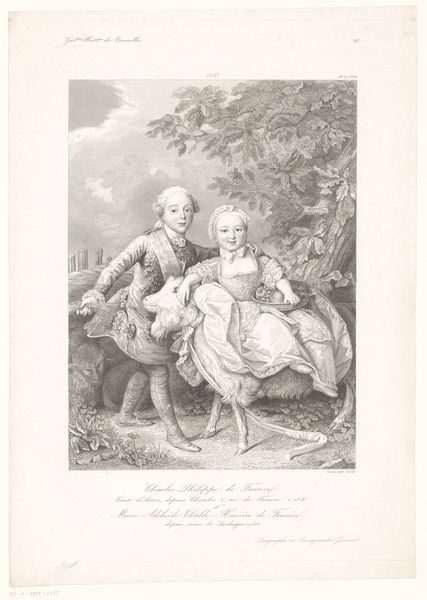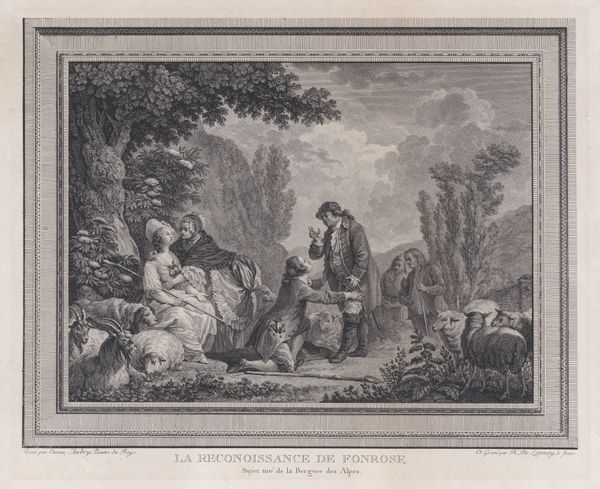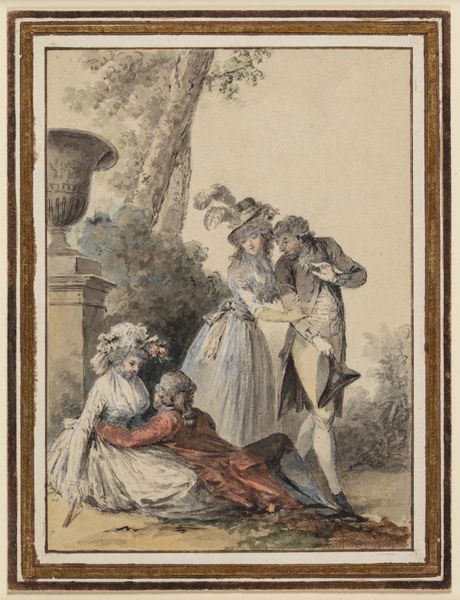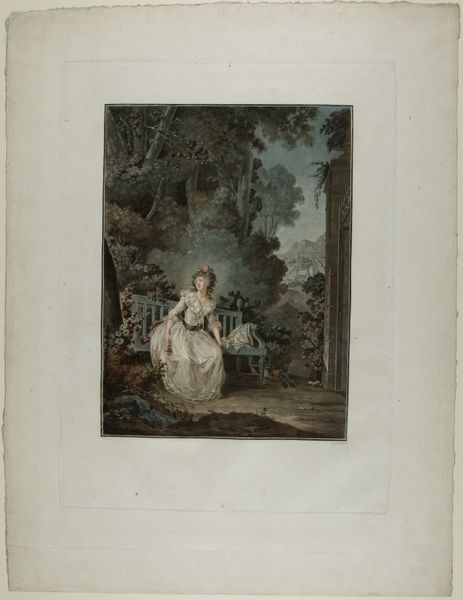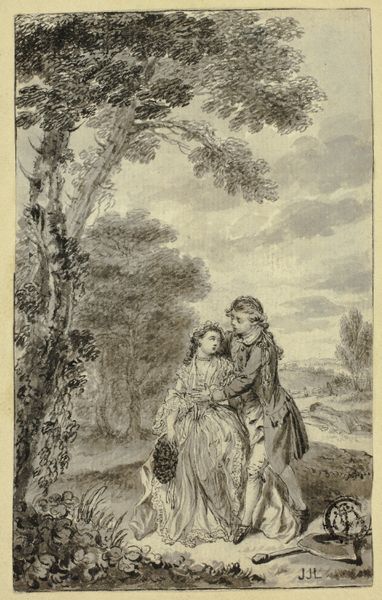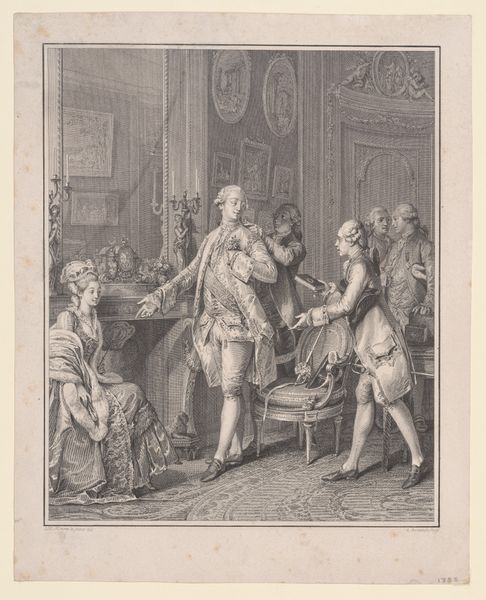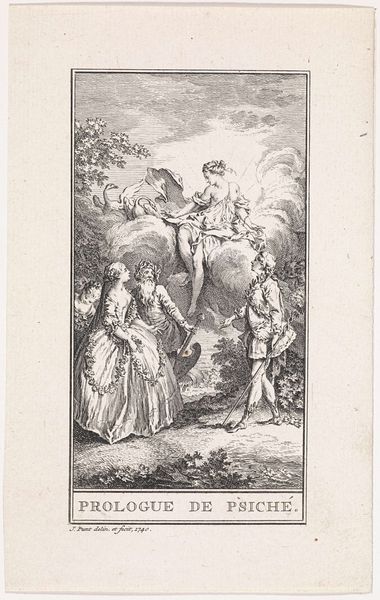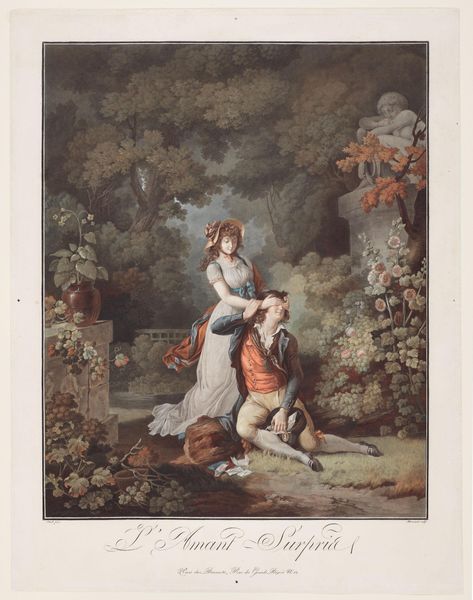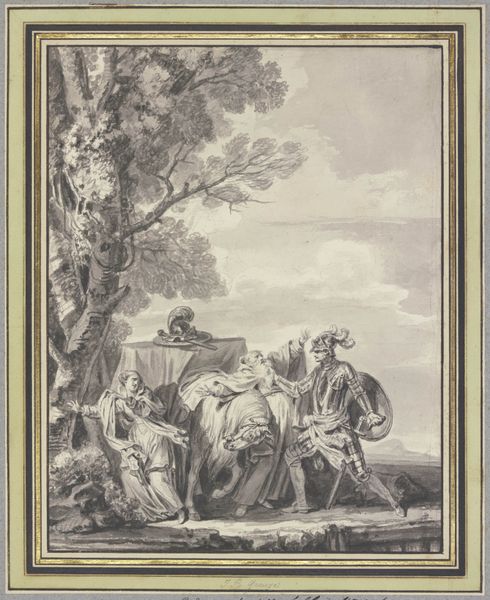
Gustav III, dronning Sophie Magdalene og kronprins Gustav Adolph spadserende i Hagaparken. 1784 - 1785
0:00
0:00
Dimensions: 260 mm (height) x 235 mm (width) (bladmaal)
Editor: This watercolour, made with pencil and coloured pencil, is titled *Gustav III, dronning Sophie Magdalene og kronprins Gustav Adolph spadserende i Hagaparken*, or *Gustav III, Queen Sophie Magdalene, and Crown Prince Gustav Adolph Walking in Haga Park*. It was painted around 1784-1785 by Cornelius Høyer. I’m struck by the way it uses a light, almost pastel palette, and I'm curious about the figures represented, who seem deliberately placed within an artificial-looking landscape. How should we understand it? Curator: This image offers a fascinating glimpse into the constructed image of Swedish royalty in the late 18th century. Think about Haga Park itself; it was a deliberate creation, a landscaped escape designed to reflect Gustav III’s vision of enlightened monarchy. What do you notice about the poses and attire of the figures? Editor: They're dressed in very formal clothing, even though they are just "walking" in a park. Their poses seem very staged, and somewhat stiff. It seems to emphasize their status rather than convey intimacy. Curator: Precisely! This image isn't about capturing a casual family moment. It is carefully constructed, an exercise in projecting power and dynasty. Note the presence of classical statuary in the background – how do you think that influences the interpretation of this piece? Editor: It gives the painting a sense of legitimacy and aligns the Swedish monarchy with classical ideals, like power and reason, making it about more than just royalty taking a walk. Curator: Exactly. Hoyer, here, participates in image making that bolsters the crown. What the image includes and what it excludes is politically pointed. And how the Swedish crown wants to be seen on the international stage at this moment. Editor: This piece really highlighted how much art can tell us about the culture and even the politics of the time. I wouldn't have noticed so many of these connections at first glance! Curator: Absolutely. Art is not made in a vacuum, and considering the forces shaping its creation gives us such valuable insight into history and society.
Comments
No comments
Be the first to comment and join the conversation on the ultimate creative platform.
